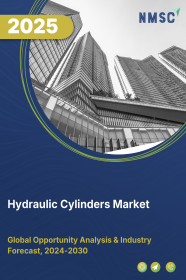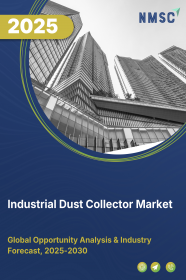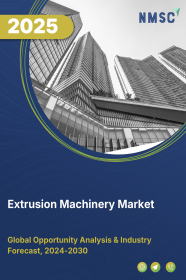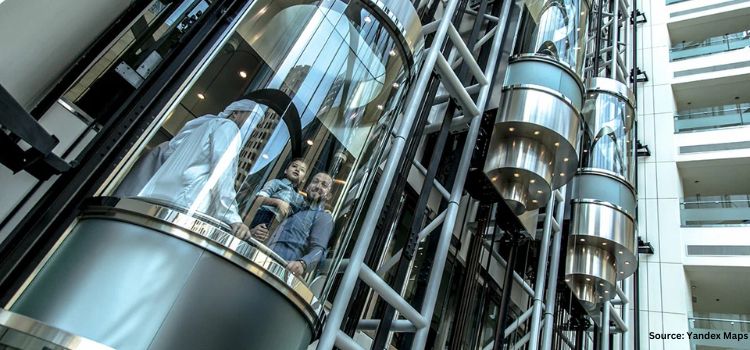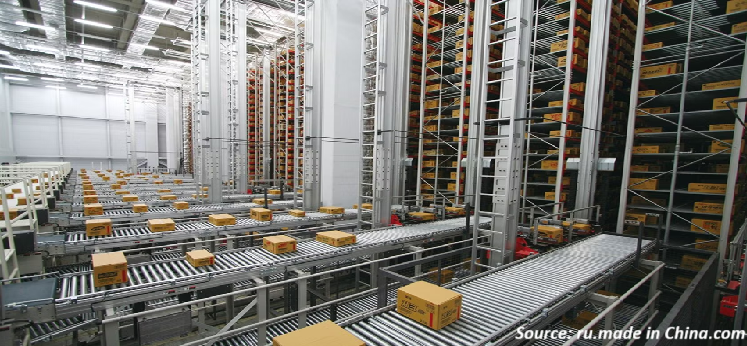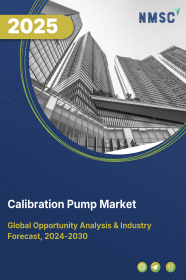
Calibration Pump Market by Type (Hydraulic Calibration Pumps and Others), by Technology (Analog Calibration Pumps and Others), by Pressure Range (Low Pressure, Medium Pressure, and Others), by Price Range (Low Range and Others), by Application (Pressure Calibration, Temperature Calibration and Others), by Distribution Channel (Direct Sales and Indirect Sales), and by End Users (Calibration Laboratories and Others) – Global Opportunity Analysis and Industry Forecast, 2025–2030
US Tariff Impact on Calibration Pump Market
Trump Tariffs Are Reshaping Global Business
Calibration Pump Market Overview
The global Calibration Pump Market size was valued at USD 1.61 billion in 2024 and is predicted to reach USD 1.69 billion by the end of 2025. The industry is predicted to reach USD 2.14 billion by 2030 with a CAGR of 4.8% from 2026-2030.
Strict regulatory demands across various industries, including pharmaceuticals, oil and gas, aerospace, and food and beverage, are primary drivers for the growth of the calibration pump industry. These sectors are bound by stringent standards that require regular and accurate calibration of their instruments to ensure operational efficiency, safety, and compliance with health regulations. For instance, ensuring the accuracy of pressure sensors in the oil and gas industry is critical for safety, while precise measurement in pharmaceuticals is essential for maintaining product quality. Calibration pumps, such as hydraulic and pneumatic types, are indispensable tools for ensuring the accuracy of measurement devices in these industries. As industries continue to rely on these essential standards, the demand for reliable and efficient calibration equipment is expected to grow consistently, fueling the overall expansion of the calibration pump market.
Strict Regulatory Across Various Industries Drives the Market Growth
The strict regulatory requirements across various industries are a key driver for the demand for calibration pumps. Sectors like pharmaceuticals, oil and gas, aerospace, and food and beverage must adhere to rigorous standards that require regular and accurate calibration of their instruments. For example, ensuring the accuracy of pressure sensors in the oil and gas industry is critical for safety and operational efficiency. In the pharmaceutical sector, precise measurement and control are vital for maintaining product quality and meeting health regulations. To comply with these standards, reliable calibration pumps, including hydraulic hand pumps and pneumatic calibration pumps, are essential for verifying and adjusting the accuracy of pressure measurement devices. This consistent need to meet regulatory requirements contributes significantly to the growth of the calibration pump industry.
The Demand for Precision and Operational Efficiency Fuels the Market Growth
The growing focus on process efficiency and accuracy in various industries is a key driver in the market. Businesses aim to optimize processes, reduce errors, and improve productivity. Accurate measurements are essential to achieving these goals. Whether ensuring correct flow rates in chemical plants or precise torque in wind turbine bolting operations, reliable measurement instruments are crucial. Calibration pumps, both hydraulic and pneumatic, play an essential role in maintaining this accuracy. By testing and calibrating parameters like pressure and flow, these pumps help improve operational efficiency, reduce waste, and ensure product quality. The ongoing need for precision across industries supports significant growth potential.
Expanding Industry Applications Boosts the Calibration Pump Market Growth
The ongoing expansion and diversification of industries that depend on precise measurements are significantly fueling growth in the calibration pump industry. In addition to traditional sectors, new and evolving applications are generating increased demand for calibration equipment. For instance, the development of advanced medical devices requires strict calibration standards, while the growing focus on environmental monitoring calls for precise calibration of sensors and measurement instruments. As industries across research and development, manufacturing, and maintenance increasingly adopt sophisticated instrumentation, the need for pressure calibration pumps, test pumps, and related accessories continues to rise. This broadening application scope highlights the robust growth potential and sustained demand expected within the calibration pump industry.
High Initial Investment and Cost Sensitivity Hinders the Market Growth
One of the key challenges in the calibration pump industry is the substantial initial investment required for high-precision calibration equipment. While the long-term advantages of accurate calibration, such as enhanced efficiency, reduced errors, and regulatory compliance, are well-established, the upfront costs of advanced systems, including hydraulic pressure calibration pumps, automated solutions, and specialized calibration rigs, can pose a significant barrier. This is especially true for smaller businesses or organizations with constrained budgets. As a result, cost-sensitive end-users may be inclined to choose lower-cost alternatives that may compromise accuracy, or they may extend calibration intervals beyond the recommended thresholds. Such practices can potentially affect the reliability and precision of systems over time.
The Promise of User-Friendly Automation Creates an Opportunity for Market Growth
A key growth opportunity in the calibration pump industry lies in developing automated and easy-to-use solutions. Given the ongoing challenges around technician availability and the increasing demand for operational efficiency, manufacturers are well-positioned to design systems that simplify the calibration process. This includes the integration of user-friendly software, step-by-step guidance, and automated features such as data logging and report generation.
A recent example is the launch of Quantex’s Q-Drive Alpha in 2024, which represents a significant shift toward smarter calibration technologies. These innovations help minimize manual intervention, improve accuracy, and make high-precision calibration more accessible across a wider range of industrial applications.
Market Segmentations and Scope of the Study
The calibration pump market report is segmented based on type, technology, pressure range, price range, application, distribution channel, end users and region. On the basis of type, the market is divided into hydraulic calibration pumps, pneumatic calibration pumps, electric calibration pumps, and others. Based on technology, the market is classified into analog calibration pumps, digital calibration pumps, smart calibration pumps, and integrated calibration systems. On the basis of pressure range, the market is segmented into low pressure, medium pressure, and high pressure. By price range, the market is categorized into low range, medium range, and high range. Based on application, the market is divided into pressure calibration, temperature calibration, flow calibration, level calibration, and other applications. On the basis of distribution channel, the market is segmented into direct sales and indirect sales. Finally, based on end users, the market is segmented into calibration laboratories, research institutions, government and regulatory bodies, and industrial. On the basis of industrial, the market is further divided into oil & gas, power & utilities, healthcare, food & beverages, chemical, and other industries. Regional breakdown and analysis of each of the aforementioned segments include regions comprising North America, Europe, Asia-Pacific, and Rest of the World (RoW).
Geographical Analysis
North America continues to hold a dominant position in the calibration pump market, with the United States leading the regional landscape, driven by strict regulatory standards and a strong focus on precision measurement systems. High calibration demands in key sectors such as aerospace, healthcare, and oil & gas support the industry scope across the region. Leading companies, including Fluke Corporation and Omega Engineering, are investing in next-generation digital calibration pumps that address the growing complexity of industrial applications. A notable development in 2024 was Fluke’s introduction of its next-gen pressure calibrator series, designed to deliver higher accuracy and improved field usability. Moreover, the rising adoption of IoT-integrated and Industry 4.0-enabled solutions is shaping market trends by offering real-time diagnostics, predictive maintenance, and enhanced operational efficiency across end-use industries.
Europe’s calibration pump market reflects a strong alignment with sustainability goals and advanced engineering practices. Countries including Germany, the United Kingdom, and France are prioritizing the development and adoption of eco-efficient calibration systems in line with the European Green Deal and region-wide climate commitments. Market growth is primarily supported by demand from the pharmaceutical and manufacturing industries, where precision calibration plays a critical role in ensuring compliance and product integrity. Prominent players such as WIKA and Beamex are expanding their portfolios with energy-conscious and digitally enhanced calibration pumps. In a recent example, WIKA introduced a compact pneumatic calibration pump tailored for on-site applications, offering reduced environmental impact and improved accuracy, underscoring the region’s continued investment in sustainable innovation and industrial modernization.
Asia-Pacific continues to experience accelerated growth in the calibration pump industry, supported by large-scale industrial development and expanding infrastructure investments. Nations such as China, India, and South Korea are driving demand for reliable calibration technologies across critical sectors, including energy, water treatment, and discrete manufacturing. A noticeable trend across the region is the growing preference for compact, easy-to-use calibration pumps designed for field versatility and reduced operational complexity. In response to this demand, regional manufacturers are introducing competitively priced and locally optimized solutions.
The Rest of the World (RoW), encompassing Latin America, the Middle East, and Africa, is gradually advancing in the calibration pump industry as awareness around precision instrumentation and quality compliance grows. Industries such as oil and gas, mining, and healthcare are increasingly adopting calibration technologies to support accurate measurement and operational reliability. While the region is still in the early stages of widespread adoption, recent collaborations and infrastructure investments are setting the stage for future development. The focus remains on providing robust, cost-effective calibration pump solutions that can withstand diverse environmental conditions and usage demands.
Strategic Moves by Key Players in the Evolving Calibration Pump Landscape
Key players in the global calibration pump industry have been adopting a variety of strategies to maintain their market leadership and expand their influence in an increasingly competitive landscape. One significant trend is the push towards technological innovation. Companies such as Fluke Corporation and Beamex have integrated advanced automation features and IoT capabilities into their calibration systems, allowing for real-time monitoring, automated data logging, and enhanced operational efficiency. This shift towards automation is driven by the growing need for user-friendly, precise calibration solutions that reduce manual intervention and the dependency on highly skilled technicians. As industries continue to prioritize process efficiency, these innovations help businesses optimize their operations, improve product quality, and adhere to stringent regulatory standards.
However, despite these advancements, challenges persist for market leaders. One notable obstacle is the high initial investment required for high-precision calibration equipment. The upfront costs associated with advanced hydraulic pressure calibration pumps and automated systems can be a barrier, particularly for smaller businesses or those with limited budgets. This cost sensitivity often leads end-users to opt for lower-cost alternatives that may not offer the same level of accuracy and reliability. Additionally, the need for skilled technicians to operate these advanced systems can add complexity and cost to the implementation process.
Looking forward, significant growth opportunities are emerging as industries such as pharmaceuticals, aerospace, and energy place increasing emphasis on precision and regulatory compliance. A notable example is Beamex's deployment of its calibration ecosystem at a major water and wastewater facility in the southeastern United States in March 2024. This highlighted the effectiveness of automated calibration solutions in improving operational efficiency and ensuring adherence to strict industry standards. By prioritizing innovation, cost-effective solutions, and regulatory compliance, companies can strengthen their market position and drive the continued growth of the industry.
Key Benefits
-
The report provides quantitative analysis and estimations of the calibration pump market from 2025 to 2030, which assists in identifying the prevailing market opportunities.
-
The study comprises a deep dive analysis of the calibration pump market including the current and future trends to depict prevalent investment pockets in the market.
-
Information related to key drivers, restraints, and opportunities and their impact on the calibration pump market is provided in the report.
-
Competitive analysis of the players, along with their market share is provided in the report.
-
SWOT analysis and Porters Five Forces model is elaborated in the study.
-
Value chain analysis in the market study provides a clear picture of roles of stakeholders.
Calibration Pump Market Key Segments
By Type
-
Hydraulic Calibration Pumps
-
Pneumatic Calibration Pumps
-
Electric Calibration Pumps
-
Others
By Technology
-
Analog Calibration Pumps
-
Digital Calibration Pumps
-
Smart Calibration Pumps
-
Integrated Calibration Systems
By Pressure Range
-
Low Pressure
-
Medium Pressure
-
High Pressure
By Price Range
-
Low Range
-
Medium Range
-
High Range
By Application
-
Pressure Calibration
-
Temperature Calibration
-
Flow Calibration
-
Level Calibration
-
Other Applications
By Distribution Channel
-
Direct Sales
-
Indirect Sales
By End Users
-
Calibration Laboratories
-
Research Institutions
-
Government and Regulatory Bodies
-
Industrial
-
Oil & Gas
-
Power & Utilities
-
Healthcare
-
Food & Beverage
-
Chemical
-
Other Industries
-
By Region
-
North America
-
The U.S.
-
Canada
-
Mexico
-
-
Europe
-
The UK
-
Germany
-
France
-
Italy
-
Spain
-
Denmark
-
Netherlands
-
Finland
-
Sweden
-
Norway
-
Russia
-
Rest of Europe
-
-
Asia Pacific
-
China
-
Japan
-
India
-
South Korea
-
Australia
-
Indonesia
-
Singapore
-
Taiwan
-
Thailand
-
Rest of Asia Pacific
-
RoW
-
Latin America
-
Middle East
-
Africa
-
Key Players
-
Fluke Corporation
-
Dwyer Instruments Inc.
-
Omega Engineering, Inc.
-
Beamex Oy AB
-
Additel Corporation
-
AMETEK Inc.
-
Ashcroft Inc.
-
Mensor LP
-
Instrukart Holdings
-
Myko Electronics Pvt. Ltd.
-
Reckonix
-
Nagman Instruments
-
Alpha Controls & Instrumentation Inc.
-
Beamex Oy Ab.
-
Baker Hughes Company
REPORT SCOPE AND SEGMENTATION
|
Parameters |
Details |
|
Market Size in 2024 |
USD 1.61 Billion |
|
Revenue Forecast in 2030 |
USD 2.14 Billion |
|
Growth Rate |
CAGR of 4.8% from 2026 to 2030 |
|
Analysis Period |
2024–2030 |
|
Base Year Considered |
2024 |
|
Forecast Period |
2025–2030 |
|
Market Size Estimation |
Billion (USD) |
|
Growth Factors |
|
|
Countries Covered |
28 |
|
Companies Profiled |
15 |
|
Market Share |
Available for 10 companies |
|
Customization Scope |
Free customization (equivalent up to 80 working hours of analysts) after purchase. Addition or alteration to country, regional, and segment scope. |
|
Pricing and Purchase Options |
Avail customized purchase options to meet your exact research needs. |

















 Speak to Our Analyst
Speak to Our Analyst



